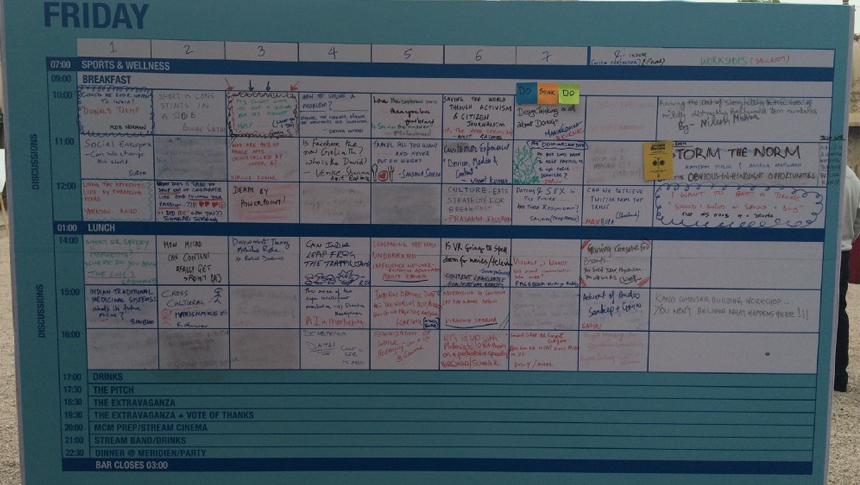I strongly believe that, to figure out whether a ‘digital’ idea would work, transport the idea to an analog world and check if it works.
If it works in analog, it’ll work in digital.
Considering that understanding media is what puts food on my dining table, when Clubhouse launched, I was hoping to get an invitation soon. I did, thanks to my brother, JP Rangaswami.
So I began my voyeur-ing on Clubhouse. I went from room to room, trying to figure out what was happening.
Interesting and intimidating, both. And I came away with the feeling, as I participated in a few discussions, that Clubhouse could, dangerously, be reduced to a digital focus group discussion, where extroverts rule and the introverts are left to fend for themselves.
And I tried to think of what would happen if Clubhouse operated in an analog world.
And it suddenly struck me: I KNOW THE ANALOG CLUBHOUSE. I’ve been there, I’ve taken part in it, I’ve profited from it, I’ve loved it.
The analog Clubhouse I’ve been to is at WPP Stream, WPP’s spectacular unconference that I’ve been lucky to have been invited to many times.
I’ve written about my experiences there, and, if you have the time, take a dekko at my thoughts here: https://medium.com/@WPPStream/when-was-your-last-unmeeting-847b392bc25b.
There are two significant areas where the Discussions (with a capital ‘D’) at Stream are better than the discussions on Clubhouse.
The first is the discovery of the deliberations. At Stream, an analog whiteboard tells you what is going on, in which room and when. Discovery of discussions that might interest is easy and non-intimidating. While Clubhouse cannot put up a ‘board’ for the thousands of discussions you could find there simultaneously, serious time and thought need to be expended on improving the discovery experience.

The second is the non-intimidation aspect. At Stream, every ‘participant’ has a voice and it is easy for the ‘moderator’ to bring them into the conversation, making the conversation the property of ALL the participants and not of just the extroverts and the famous. Clubhouse needs to figure out this aspect of inclusivity – and I don’t have the answer yet. At Stream, the problem is solved by the smaller sizes of the groups, by body language – and by old-world analog politeness. How this is replicated digitally is something that one needs to spend time on.
The other learning from Stream that Clubhouse could look at is the analog nature of post-discussion conversations. While each discussion had a ‘hard’ stop, breakaway groups, if they wanted, could carry on the discussions beyond the confines of the ‘room’ that has just been vacated.
I wrote this about Stream a few years ago. “And that’s the magic. Attending Stream is a leap of faith in the delegate list; you’re fairly sure that the conversations and talks will be thought-provoking, provocative and useful. And unpredictable.
It’s the unpredictability that I love. You’re surprised by scintillating thoughts from someone you haven’t heard of or met before, and there are many such at each Stream. Compare that with ‘normal’ conferences where you know precisely who will speak, on what subject and for how long.”
Clubhouse promises me the same. And I’m going to attend Clubhouse sessions with the same enthusiasm and hope with which I attended Stream sessions. And I hope to see you there, soon.